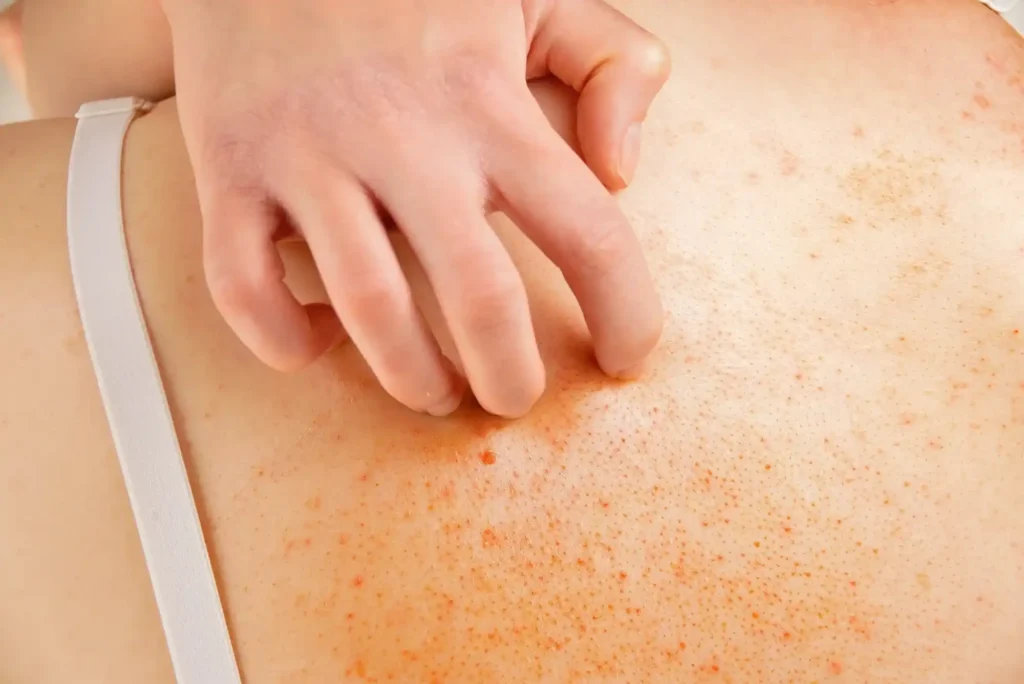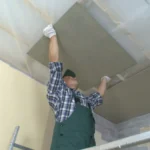Stasis dermatitis, a type of eczema, primarily affects the skin on the lower legs and is a result of poor circulation, typically due to venous insufficiency. This occurs when the veins in the legs struggle to return blood to the heart, causing blood to pool and increasing pressure within the veins. The excess pressure damages the skin and underlying tissues, leading to inflammation, redness, itching, and in more severe cases, ulcers. Stasis dermatitis is common in people with varicose veins, obesity, and those who stand for extended periods.
What is Stasis Dermatitis?
Stasis dermatitis is a skin condition triggered by chronic venous insufficiency, where the blood doesn’t circulate efficiently, causing fluid to build up in the lower extremities. The resulting inflammation and poor oxygenation of the skin tissue lead to the characteristic symptoms of stasis dermatitis, including redness, dry, flaky skin, itching, and skin thickening. In more severe cases, open sores or ulcers may develop, requiring medical intervention. This condition is not only uncomfortable but can also significantly impact quality of life, making effective treatment crucial.
Causes and Risk Factors of Stasis Dermatitis
The primary cause of stasis dermatitis is venous insufficiency. This condition weakens the vein walls and valves, preventing blood from flowing back to the heart, which causes blood to pool in the veins of the lower legs. Over time, this can lead to the symptoms of stasis dermatitis. Other risk factors include aging, obesity, pregnancy, and a sedentary lifestyle, all of which can contribute to poor circulation. People with varicose veins or a history of blood clots are also more likely to develop this condition.
Symptoms of Stasis Dermatitis
Symptoms of stasis dermatitis typically begin with mild skin changes and gradually worsen if untreated. The initial signs include redness and swelling in the affected area, often around the lower legs and ankles. As the condition progresses, the skin may become dry, flaky, and thickened. This can lead to severe itching and discomfort. In advanced cases, open sores or ulcers may develop, which are slow to heal and can become infected. Venous ulcers are particularly common near the ankles and can be quite painful.
Diagnosis of Stasis Dermatitis
A healthcare provider diagnoses stasis dermatitis based on a physical examination of the skin and the patient’s medical history. The provider will look for signs of poor circulation, such as swelling, varicose veins, and the characteristic appearance of the skin. If necessary, further tests, such as a Doppler ultrasound, may be used to assess the flow of blood through the veins. This test can help determine whether there is venous insufficiency or other underlying venous problems contributing to the dermatitis.

Treatment of Stasis Dermatitis
Treating stasis dermatitis involves both managing the skin condition and addressing the underlying venous insufficiency. For skin care, topical treatments such as corticosteroids may be prescribed to reduce inflammation and itching. However, these treatments should be used sparingly, as long-term use of steroids can have adverse effects on the skin. If ulcers or open sores are present, antibiotics may be prescribed to prevent infection. In cases where the condition is severe or ulcers do not heal, advanced wound care, including special dressings, may be necessary.
In addition to topical treatments, lifestyle modifications play a significant role in managing stasis dermatitis. Patients are encouraged to elevate their legs regularly to reduce swelling and improve circulation. Compression stockings are another effective tool, as they apply gentle pressure to the legs, promoting better blood flow and reducing the pooling of blood. For people who are overweight, losing weight can significantly reduce the pressure on the veins and improve circulation.
Advanced Treatment Options
For more advanced cases of stasis dermatitis, surgical options may be necessary. If the condition is caused by varicose veins or other venous problems, treatments such as sclerotherapy or laser therapy may be used to close off the faulty veins. In severe cases, venous surgery may be performed to remove the damaged veins and restore proper circulation. These procedures can help prevent the recurrence of stasis dermatitis and improve overall quality of life.
Prevention of Stasis Dermatitis
While it may not be possible to completely prevent stasis dermatitis, there are several steps that individuals can take to reduce the risk. Maintaining a healthy weight, exercising regularly, and avoiding long periods of sitting or standing can all help improve circulation and prevent the buildup of blood in the lower legs. Wearing compression stockings and elevating the legs periodically during the day can also help reduce the likelihood of developing the condition. For individuals already diagnosed with venous insufficiency, following a comprehensive treatment plan and monitoring for early symptoms of stasis dermatitis is essential to prevent the condition from worsening.
Stasis dermatitis is a challenging condition that is closely tied to venous insufficiency. While the symptoms can be uncomfortable and, in some cases, debilitating, a combination of medical treatments, lifestyle changes, and preventive measures can help manage and even eliminate the condition. By addressing both the skin symptoms and the underlying venous issues, individuals with stasis dermatitis can experience relief and reduce their risk of complications such as venous ulcers. Regular consultations with healthcare providers are essential to ensure that the condition is managed effectively and that any underlying venous problems are treated appropriately.
| Treatment | Description | Indications |
|---|---|---|
| Topical Medications | Corticosteroids to reduce inflammation and itching. | Limited use to avoid side effects. |
| Compression Stockings | Special stockings to improve blood circulation in the veins. | Useful for preventing blood pooling. |
| Venous Surgery | Surgical interventions to correct damaged veins or improve circulation. | In severe cases or for varicose veins. |
In, by combining medical treatment with lifestyle changes, individuals can better manage stasis dermatitis and reduce the risk of further complications.











